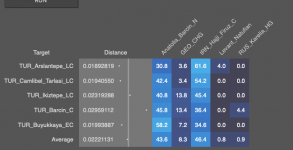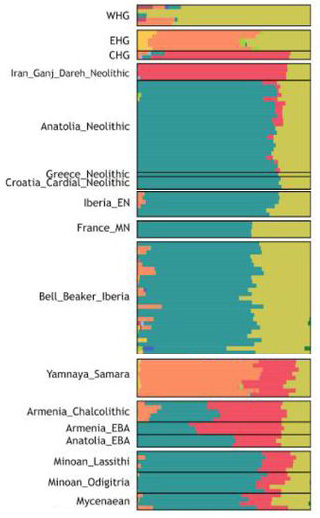Regio X
Regular Member
- Messages
- 1,109
- Reaction score
- 480
- Points
- 0
Dzudzuana is too old, but ok. Sardinians score 77-87% for Anatolian Hunter-Gatherer in models using G25 (depending on Settings and stuff), and AHG in turn was supposedly a "Dzudzuana relic", so I believe Sardinians are perhaps the most "Dzudzuana-like" among moderns, or simply the closest to Dzudzuana. Other areas apparently very rich in AHG are La Rioja, Corsica, Bergamo, Basque C. etc.Interesting, so Sardinians have to be the most Dzudzuana-like population in the world today ?
For isolating components I used as sources AHG itself, WHG, Natufian, Taforalt, Shum Laka 8000, Kotias, Karelia, Iran Meso, East Asian, Kenya Neo and others (including moderns, when I don't find ancient sources, such Australians etc.).





